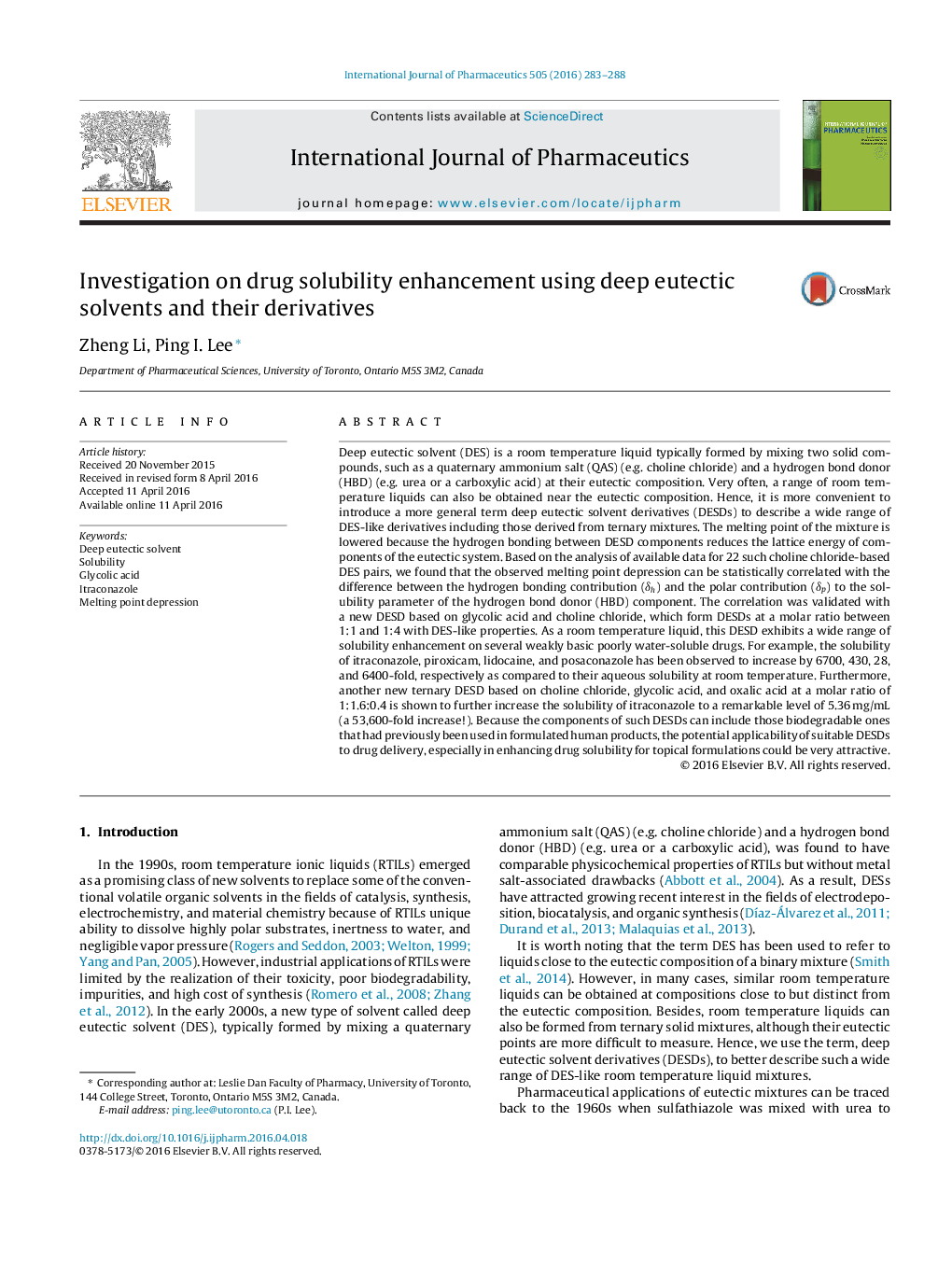| Article ID | Journal | Published Year | Pages | File Type |
|---|---|---|---|---|
| 2500871 | International Journal of Pharmaceutics | 2016 | 6 Pages |
Deep eutectic solvent (DES) is a room temperature liquid typically formed by mixing two solid compounds, such as a quaternary ammonium salt (QAS) (e.g. choline chloride) and a hydrogen bond donor (HBD) (e.g. urea or a carboxylic acid) at their eutectic composition. Very often, a range of room temperature liquids can also be obtained near the eutectic composition. Hence, it is more convenient to introduce a more general term deep eutectic solvent derivatives (DESDs) to describe a wide range of DES-like derivatives including those derived from ternary mixtures. The melting point of the mixture is lowered because the hydrogen bonding between DESD components reduces the lattice energy of components of the eutectic system. Based on the analysis of available data for 22 such choline chloride-based DES pairs, we found that the observed melting point depression can be statistically correlated with the difference between the hydrogen bonding contribution (δh) and the polar contribution (δp) to the solubility parameter of the hydrogen bond donor (HBD) component. The correlation was validated with a new DESD based on glycolic acid and choline chloride, which form DESDs at a molar ratio between 1:1 and 1:4 with DES-like properties. As a room temperature liquid, this DESD exhibits a wide range of solubility enhancement on several weakly basic poorly water-soluble drugs. For example, the solubility of itraconazole, piroxicam, lidocaine, and posaconazole has been observed to increase by 6700, 430, 28, and 6400-fold, respectively as compared to their aqueous solubility at room temperature. Furthermore, another new ternary DESD based on choline chloride, glycolic acid, and oxalic acid at a molar ratio of 1:1.6:0.4 is shown to further increase the solubility of itraconazole to a remarkable level of 5.36 mg/mL (a 53,600-fold increase!). Because the components of such DESDs can include those biodegradable ones that had previously been used in formulated human products, the potential applicability of suitable DESDs to drug delivery, especially in enhancing drug solubility for topical formulations could be very attractive.
Graphical abstractFigure optionsDownload full-size imageDownload high-quality image (118 K)Download as PowerPoint slide
